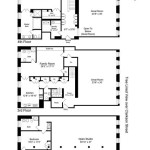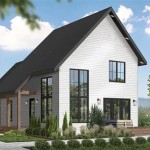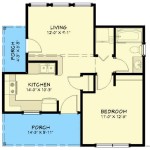Essential Aspects of Planning a House
Planning a house is an exciting and significant undertaking that requires careful consideration of various aspects to ensure a functional, comfortable, and aesthetically pleasing living space.
1. Purpose and Function:
Define the primary purpose of the house and its intended use, such as a family home, vacation retreat, or rental property. Consider the number of bedrooms, bathrooms, and common areas required based on the household's needs and lifestyle.
2. Site Selection and Layout:
Choose a suitable plot of land that meets the size and shape requirements of the house. Consider factors such as soil conditions, drainage, access to utilities, and neighborhood amenities. Plan the layout of the house to optimize natural light, ventilation, and views.
3. Architectural Style and Design:
Select an architectural style that aligns with the desired ambiance and functionality. Consider factors such as rooflines, windows, and exterior materials. Develop a detailed design plan that includes floor plans, elevations, and sections.
4. Interior Space Planning:
Plan the interior layout carefully to create a functional and inviting space. Consider the flow of traffic, the placement of furniture, and the amount of storage needed. Designate specific areas for different activities, such as cooking, dining, sleeping, and entertaining.
5. Structural and Material Choices:
Determine the structural system of the house, such as wood framing, steel beams, or concrete walls. Select building materials that meet the desired aesthetic and durability requirements, considering factors such as cost, maintenance, and energy efficiency.
6. Mechanical and Electrical Systems:
Design and install efficient and reliable mechanical and electrical systems that meet the house's energy needs and provide comfort. Plan for lighting, heating, cooling, plumbing, and electrical outlets based on the specific requirements of each room.
7. Exterior Features and Landscape Design:
Plan the exterior features of the house, including porches, patios, and driveways. Design a landscape that complements the architectural style and provides privacy, shade, and outdoor living space. Consider factors such as plant selection, irrigation, and maintenance.
8. Budgeting and Cost Estimation:
Develop a detailed budget that includes the costs of land, construction, materials, labor, and permits. Track expenses throughout the planning and construction process to ensure that the project stays within the established budget.
9. Permitting and Regulations:
Obtain necessary permits and approvals from local authorities. Ensure that the house design complies with building codes and zoning regulations. Seek professional advice from an architect or engineer if necessary.
10. Sustainability Considerations:
Incorporate sustainable design principles to reduce the house's environmental impact. Consider factors such as energy efficiency, water conservation, renewable energy sources, and sustainable building materials.
Planning a house involves multiple aspects that require careful consideration. By addressing these essential elements, homeowners can create a livable, functional, and visually appealing home that meets their specific needs and preferences.

House Plans How To Design Your Home Plan

House Plans How To Design Your Home Plan

House Plans How To Design Your Home Plan

Small House Design 2024001 Pinoy Eplans Floor Plans

House Plans How To Design Your Home Plan

Pin On Κατόψεις

House Plan Maywood Sater Design Collection

Small House Design 2024005 Pinoy Eplans Modern Plans Floor

Floor Plans Types Symbols Examples

Grand Ridge House Plan A Classic Design Archival Designs








